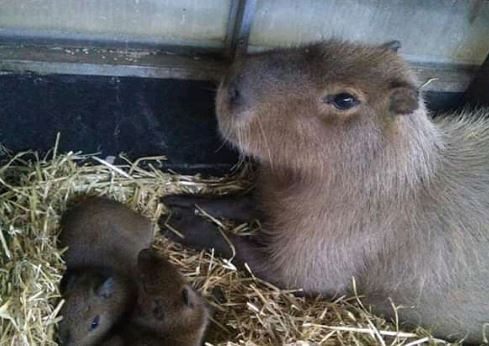Poisonous plants can be described as plants that, when a sufficient quantity is ingested, result in fatal or harmful reactions to your pet capybara. They are plants capable of producing toxins that are very dangerous to your pet.
In this article, you will find out some plants that are harmful to capybara. After reading this article, it is expected you take note of these plants and keep them away from your capybara and its surroundings.
Why is this important anyway?
It is important to note these poisonous plants as a capybara owner so you can remove them all around your home and also prevent your pet from eating them. You owe your capybara a duty to check around your garden and get rid of all the toxic flowers or plants that are unhealthy for their consumption.
It is a good practice to monitor or supervise your pets and ensure whatever they eat is healthy. Below are some hazardous plants that your household pet capybaras should not consume, and if they do, the side effects and reactions you are likely to expect.
5 Most Toxic Plants For Capybaras
The plants below are considered highly toxic for household animals, including capybaras. They have the ability to cause death to your pet if proper care is not taken and should be totally avoided for consumption.
1. Deathcamas & Meadow Deathcamas
Deathcamas & Meadow Deathcamas, also Toxicoscordion venenosum, are species of flowering plants of the family of Melanthiaceae & native to western North America.
They have large blossom blooms in the middle of the spring, and they can appear as purple or white flowers.
 Death camas contain several steroidal alkaloids, and the bulbs and mature leaves are the most toxic and highly dangerous for consumption. The effect is manifested in the symptoms your pet would show, and it would be disastrous.
Death camas contain several steroidal alkaloids, and the bulbs and mature leaves are the most toxic and highly dangerous for consumption. The effect is manifested in the symptoms your pet would show, and it would be disastrous.
2. Foxglove (Digitalis Purpurea)
Common foxglove is a biennial from western Europe and belongs to the plantain family (Plantaginaceae) and grows in mountainsides, woodland clearings, and on disturbed sites also useful as a garden ornamental.
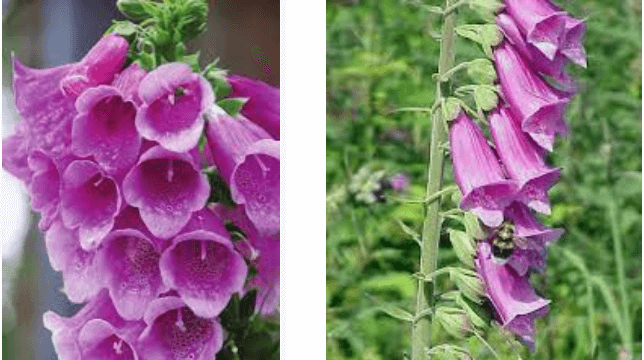
Foxglove (Digitalis purpurea) is a garden plant harboring digitalis and other cardiac glycosides. A group of chemicals that can affect the heart and are also very dangerous to animals, including humans, which, when consumed, could lead to death.
3. Jimson Weed (Devil’s Trumpet)
Jimson weed, otherwise known as”devil’s trumpet, ” is indigenous to North America and is the most commonly found weed. It can flower in moderately warm regions, roadsides, and across the United States at dung-rich livestock enclosures.

It blossoms in summer periods bearing violet or white trumpet-like-shaped flowers. It has seeds that have a high concentration of atropine, and this makes it very toxic.
Chewing the seeds can release the belladonna compounds that generate psychoactive reactions in your pet capybara.
4. Castor Bean (Ricinus Communis)
Castor beans, also referred to as Ricinus Communis, is rich in ricin, a highly-rated toxic substance identified by research. If consumed, they can cause fatal gastroenteritis, and steps are not taken quickly.

A higher dose of castor beans ingested can lead to severe injurious damage to your capybara. Castor beans are used to make castor oil; the poisonous ricin is the waste “mash” obtained when castor oil is produced.
Although research also revealed that ricin has been experimented with or used to kill cancer cells in medical practice.
5. Western Water Hemlock (Cicuta Douglasii)
Western Water hemlock is native to North America and is one of the most toxic plants. A capybara can be poisoned by even consuming a small amount of it. The roots are the most poisonous part, as also the green seed heads.

It is a plant that grows in wet places such as river banks, and it is poisonous at all stages of its development. It can cause major epigastric distress within an hour or less if ingested.
RECOMMENDED POSTS:
How Do Capybaras React To Poisonous Plants Toxicity
Many believe that capybaras would know plants that are safe for their consumption; this usually exists in the wild, where teen capybaras learn from the older ones.
But while a capybara lives with you in your home, which is not its natural habitat, it becomes your duty to ensure it feeds healthily and lives safely. Knowing how your pet capybara would be when he mistakenly ingests a toxic plant will help you take quick steps to save the animal.
Effects Of Dangerous Plants On Capybaras
Highly toxic plants can cause acute kidney failure and other issues within 72 hours of ingestion if care is not taken. Here are some symptoms to watch out for if your pet has fed on a dangerous plant:
- Restlessness.
- Marked loss of appetite.
- Vomiting.
- Weakness.
- Irregular heart rate.
- Respiratory distress.
- Diarrhea.
- Intestinal disorders.
- Blisters.
- Shock.
- Convulsions.
- Abdominal tenderness.
- Marked salivation.
- Slow heart rate.
- Dermatitis.
- Hepatic failure.
- Death.
What To Do If A Capybara Eats A Poisonous Plant?
Below are steps to take once you discover your capybara pet has consumed a dangerous plant.
- Take your capybara away from the zone of toxic plants.
- Ensure your capybara is conscious.
- Call your vet immediately.
How To Prevent Capybaras From Eat Dangerous Plants
- Learn and recognize what plants are poisonous to your animal and keep them away from such an environment.
- Check what your capybaras feed on and how they react to them occasionally and know when it’s not healthy.
- Feed your capybaras with their recommended healthy food.
- Clean your environment to clear poisonous plants from growing near your animals.
Conclusion
Capybaras eat grass and water plants and feed on seeds, grains, melons, and squashes. As a Capybara owner, monitoring your pet and ensuring they feed on healthy, non-toxic plants is important.
We have listed five highly toxic plants that are dangerous for your capybara, and we hope you find them helpful.

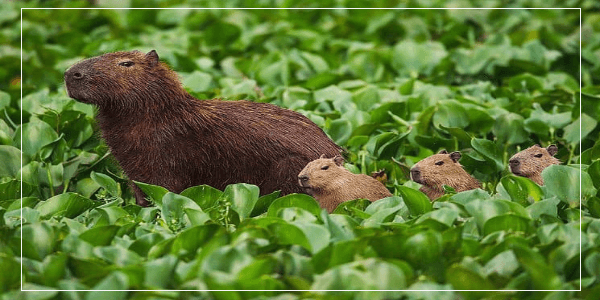
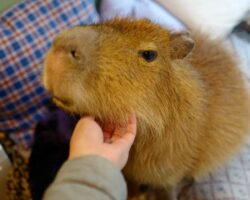
![Capybara Meat And Its Culinary Uses - [Every You Should Know] Capybara Meat & Culinary Uses](https://capybaratips.com/wp-content/uploads/2023/03/Capybara-meat-250x200.webp)
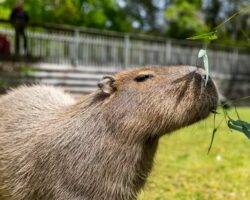

![How To Get a Pet Capybara Uk [Step By Step] How To Get a Pet Capybara Uk](https://capybaratips.com/wp-content/uploads/2023/03/Uk-Capybara-250x200.webp)
![Where Can I Buy a Capybara Near Me? - [Recommended] Where Can I Buy a Capybara Near Me](https://capybaratips.com/wp-content/uploads/2023/03/Near-Me-250x200.webp)
